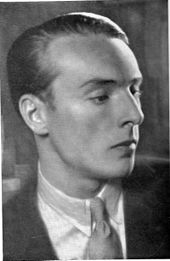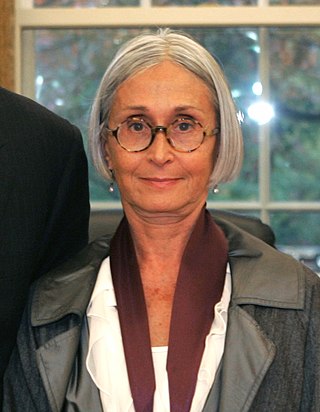
Twyla Tharp is an American dancer, choreographer, and author who lives and works in New York City. In 1965 she formed the company Twyla Tharp Dance, which merged with American Ballet Theatre in 1988. She regrouped the company in 1991. Her work often uses classical music, jazz, and contemporary pop music.

Ballet is a type of performance dance that originated during the Italian Renaissance in the fifteenth century and later developed into a concert dance form in France and Russia. It has since become a widespread and highly technical form of dance with its own vocabulary. Ballet has been influential globally and has defined the foundational techniques which are used in many other dance genres and cultures. Various schools around the world have incorporated their own cultures. As a result, ballet has evolved in distinct ways.

George Balanchine was an American ballet choreographer of Georgian origin, recognized as one of the most influential choreographers of the 20th-century. Styled as the father of American ballet, he co-founded the New York City Ballet and remained its artistic director for more than 35 years. His choreography is characterized by plotless ballets with minimal costume and décor, performed to classical and neoclassical music.

Mikhail Nikolayevich Baryshnikov is a Latvian and American dancer, choreographer, and actor. He was the preeminent male classical ballet dancer of the 1970s and 1980s. He subsequently became a noted dance director.

Neoclassical ballet is the style of 20th-century classical ballet exemplified by the works of George Balanchine. The term "neoclassical ballet" appears in the 1920s with Sergei Diaghilev's Ballets Russes, in response to the excesses of romanticism and post-romantic modernism. It draws on the advanced technique of 19th-century Russian Imperial dance, but strips it of its detailed narrative and heavy theatrical setting while retaining many key techniques, such as pointe technique.
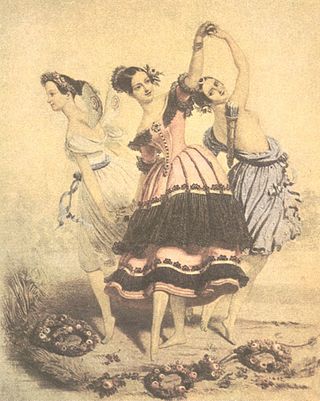
The Romantic ballet is defined primarily by an era in ballet in which the ideas of Romanticism in art and literature influenced the creation of ballets. The era occurred during the early to mid 19th century primarily at the Théâtre de l'Académie Royale de Musique of the Paris Opera Ballet and Her Majesty's Theatre in London. It is typically considered to have begun with the 1827 début in Paris of the ballerina Marie Taglioni in the ballet La Sylphide, and to have reached its zenith with the premiere of the divertissement Pas de Quatre staged by the Ballet Master Jules Perrot in London in 1845. The Romantic ballet had no immediate end, but rather a slow decline. Arthur Saint-Léon's 1870 ballet Coppélia is considered to be the last work of the Romantic Ballet. Romantic ballet is believed to have been experienced in three main phases: The zenith phase from 1830-1840, the decline phase from 1850-1880, and the revival phase in the 1890s prior to Diaghilev. Each phase is synonymous with the production of a few specifically stylized ballets.
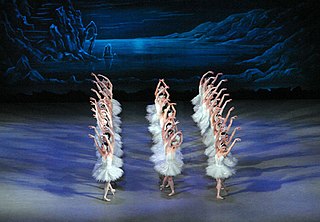
A narrative ballet, also known as classical ballet or story ballet is a form of ballet that has a plot and characters. It is typically a production with full sets and costumes. It was an invention of the eighteenth century.
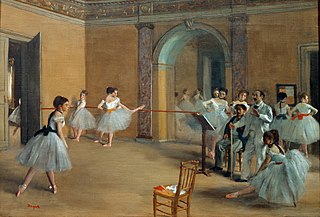
Classical ballet is any of the traditional, formal styles of ballet that exclusively employ classical ballet technique. It is known for its aesthetics and rigorous technique, its flowing, precise movements, and its ethereal qualities.

The Joffrey Ballet is an American dance company and training institution in Chicago, Illinois. The Joffrey regularly performs classical and contemporary ballets during its annual performance season at the Civic Opera House, including its annual presentation of The Nutcracker.
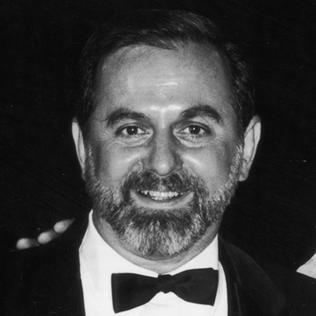
Robert Joffrey was an American dancer, teacher, producer, choreographer, and co-founder of the Joffrey Ballet, known for his highly imaginative modern ballets. He was born Anver Bey Abdullah Jaffa Khan in Seattle, Washington to a Pashtun father from Afghanistan and a mother from Italy.

The Ballets Russes was an itinerant ballet company begun in Paris that performed between 1909 and 1929 throughout Europe and on tours to North and South America. The company never performed in Russia, where the Revolution disrupted society. After its initial Paris season, the company had no formal ties there.
Lawrence Pech is a dancer, choreographer and teacher currently living and working in the San Francisco Bay Area.

Apollo is a neoclassical ballet in two tableaux composed between 1927 and 1928 by Igor Stravinsky. It was choreographed in 1928 by twenty-four-year-old George Balanchine, with the composer contributing the libretto. The scenery and costumes were designed by André Bauchant, with new costumes by Coco Chanel in 1929. The scenery was executed by Alexander Shervashidze, with costumes under the direction of Mme. A. Youkine. The American patron of the arts Elizabeth Sprague Coolidge had commissioned the ballet in 1927 for a festival of contemporary music to be held the following year at the Library of Congress in Washington, D.C.

Ballet is a formalized dance form with its origins in the Italian Renaissance courts of 15th and 16th centuries. Ballet spread from Italy to France with the help of Catherine de' Medici, where ballet developed even further under her aristocratic influence. An early example of Catherine's development of ballet is through 'Le Paradis d' Amour', a piece of work presented at the wedding of her daughter Marguerite de Valois to Henry of Navarre. Aristocratic money was responsible for the initial stages of development in 'court ballet', as it was royal money that dictated the ideas, literature and music used in ballets that were created to primarily entertain the aristocrats of the time. The first formal 'court ballet' ever recognized was staged in 1573, 'Ballet des Polonais'. In true form of royal entertainment, 'Ballet des Polonais' was commissioned by Catherine de' Medici to honor the Polish ambassadors who were visiting Paris upon the accession of Henry of Anjou to the throne of Poland. In 1581, Catherine de' Medici commissioned another court ballet, Ballet Comique de la Reine, however it was her compatriot, Balthasar de Beaujoyeulx, who organized the ballet. Catherine de' Medici and Balthasar de Beaujoyeulx were responsible for presenting the first court ballet ever to apply the principles of Baif's Academie, by integrating poetry, dance, music and set design to convey a unified dramatic storyline. Moreover, the early organization and development of 'court ballet' was funded by, influenced by and produced by the aristocrats of the time, fulfilling both their personal entertainment and political propaganda needs.

Modern dance is a broad genre of western concert or theatrical dance which includes dance styles such as ballet, folk, ethnic, religious, and social dancing; and primarily arose out of Europe and the United States in the late 19th and early 20th centuries. It was considered to have been developed as a rejection of, or rebellion against, classical ballet, and also a way to express social concerns like socioeconomic and cultural factors.

Daniil Simkin is a ballet dancer and entrepreneur, best known for his accomplished technical skill and charismatic stage presence. He is a principal dancer with both American Ballet Theatre and Berlin State Ballet. Simkin is based in Berlin and New York, and is the founder of Studio Simkin.
Magali Messac, a French-American ballet dancer, was born and raised in the south of France, where she received her early training from Olga and Henry Taneeff.
Balanchine technique or Balanchine method is the ballet performance style invented by dancer, choreographer, and teacher George Balanchine (1904–1983), and a trademark of the George Balanchine Foundation. It is used widely today in many of Balanchine's choreographic works. It is employed by ballet companies and taught in schools throughout North America, including the New York City Ballet and School of American Ballet, where it first emerged.
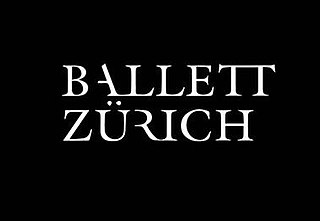
Ballett Zürich, formerly known as Zürich Ballet, is the largest professional ballet company in Switzerland. Its principal venue is the Zürich Opera House and it regularly tours across the country. The company includes an ensemble cast of 36 dancers and 14 junior members. Christian Spuck has directed the company since 2012, assuming the role from Heinz Spoerli. From the 23/24 Season, Cathy Marston has been appointed new ballet director.
Throughout its history, the costume of ballet has influenced and been influenced by fashion. Ballet-specific clothing used in productions and during practice, such as ballet flats, ballerina skirt, legwarmers, and leotards have been elements of fashion trends. Ballet costume itself has adapted aesthetically over the years, incorporating contemporary fashion trends while also updating fabrics and materials to allow for greater freedom of movement for the dancers. The classic ballerina costume with a tutu and pointe shoes debuted in the 1830s. Ballet costume is marked by the innovation in lightweight materials such as tulle, chiffon, and organza.

